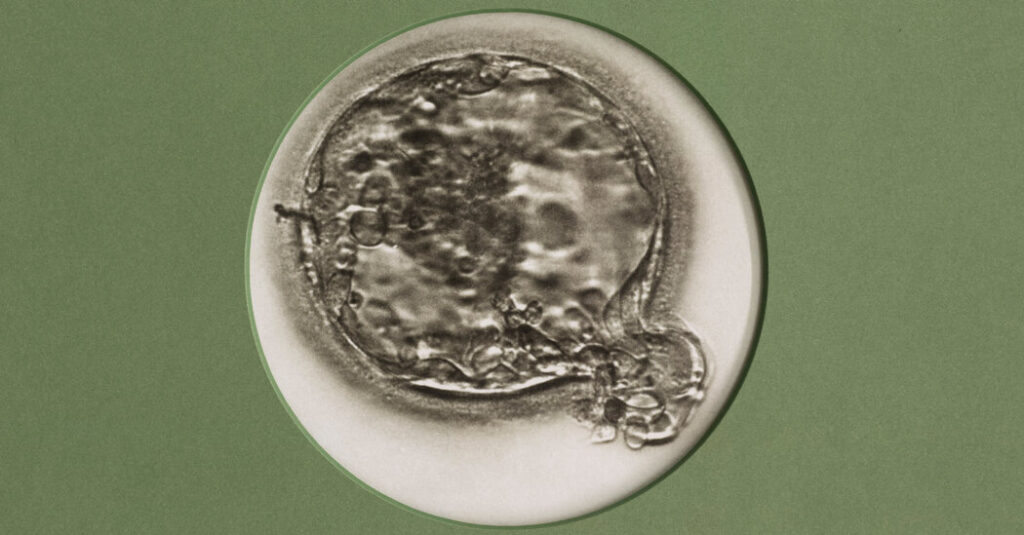Since I started writing about fertility three years ago, I have heard countless stories from women struggling to conceive or undergoing in vitro fertilization, sometimes shelling out $30,000 for a single treatment with no certainty it will succeed. Or from those who made financial and personal sacrifices to freeze their eggs while young, only to discover years later, when it was too late, that just a small fraction survived thawing.
Although cultural commentary often suggests otherwise, many Gen Z women, including myself, deeply want children. We’re simply trying to navigate a world where the timelines of our bodies and the timelines of our ambitions rarely align. As a result, childbearing drifts later, and many of us feel a sharp anxiety as each year passes, widening the distance between our hopes and reality. Meanwhile, technologies to preserve and support fertility exist, but they remain prohibitively expensive and inconsistently effective.
Last month, President Trump announced his new set of I.V.F. policies, and many hoping for a genuine path out of the labyrinth of inequities and inefficiencies that plague fertility care in America were underwhelmed. The president’s plan offers discounts on a subset of I.V.F. medications and clarifies existing ways for employers to voluntarily offer fertility benefits, but overall does little to lower the barriers that keep I.V.F. out of reach for most people.
And yet, Mr. Trump’s announcement made me optimistic. Here was a Republican president, speaking from the Oval Office, declaring that “you can’t get more pro-life than this,” in reference to I.V.F.
This matters because, although most Americans support I.V.F., a vocal minority on the right has long treated the technology with suspicion. This faction has become increasingly organized and influential in recent years, pushing for policy changes that would limit access to I.V.F. or render the procedure less effective, while promoting alternative approaches to fertility care that have little scientific basis. Whatever the limits of the policy itself, the cultural signal from Mr. Trump was unmistakable: The longstanding wall separating reproductive technologies from pro-family values appears to be cracking. And if the wall comes down, the possibility for real reform opens.
The difficulties that women face when undergoing I.V.F. are not inevitable; they are the result of policy failure. Women’s health, and reproductive science in particular, is chronically underfunded. One recent analysis found that National Institutes of Health funding overwhelmingly neglects diseases that disproportionally affect women.
Endometriosis is one striking example: It affects about one in 10 women of reproductive age, causing chronic pain and infertility, yet remains one of the most underfunded diseases relative to its burden. The consequences are predictable. It takes women five to eight years on average to get a diagnosis following the onset of symptoms, enduring preventable suffering along the way.
This neglect extends to how fertility care is delivered. Insurance coverage varies widely by state and employer. In 2024, only about one-quarter of firms with over 200 employees included I.V.F. coverage in their health plans, and about one in 10 offered coverage for egg freezing, according to a KFF survey. Shortages in trained professionals, including embryologists and doctors specializing in infertility, drive up costs and waiting times. Lack of sufficient oversight of embryology labs means that quality can vary widely among clinics. Even basic standards, like oxygen levels in embryo culture chambers, can differ from one clinic to another.
At the same time, statistics on clinic outcomes are reported in ways that are often misleading and difficult to compare. As a result, scientific progress is hampered because the field can’t learn from its own data. And patients end up making expensive, life-changing medical decisions without a clear picture of their real chances.
There are obvious practical interventions that would expand access and improve results. This includes increasing federal investment in reproductive science, expanding insurance coverage for I.V.F. and fertility preservation, investing in work force development, requiring consistent lab accreditation and quality standards and ensuring more rigorous reporting on clinic outcomes. If Mr. Trump is willing to support I.V.F., why hasn’t he proposed more substantive reforms?
Part of the answer lies in Mr. Trump’s governing style: He excels at cultural signaling, not structural policy. But it also reflects pressure from the anti-I.V.F. bloc that is part of his base. Nonetheless, Mr. Trump’s position creates a rare opening for bipartisan cooperation to support family formation.
Call it a fertility abundance agenda — a plan to help women build the families they want, and on their own terms, by expanding access to fertility care and modernizing the systems that support it. Such an agenda should represent priorities across the political spectrum. For conservatives, it would reinforce pro-family values and respond to their growing alarm about declining birth rates. For progressives, it would advance the goal of making high-quality reproductive health care more affordable and accessible.
For years, pronatalist policy in the United States has been largely conservative, emphasizing earlier childbearing and implicitly asking women to trade autonomy for family formation. But this message does not resonate with young women. In a recent NBC poll, Gen Z women who voted for Mr. Trump in the last election prioritized having a good job, owning a home and being financially independent above having children. Asking young women to choose between autonomy and family repels the very group whose decisions will shape our demographic future.
A society that claims to value families shouldn’t treat the ability to have one as a test of luck or wealth. It shouldn’t force women to reorganize their entire lives around a biological deadline while offering little support when that deadline approaches. What we’re asking for is hardly radical: a system that treats fertility as a legitimate part of health care, and recognizes that building a full life and building a family are goals that coexist for most women.
Ruxandra Teslo is a genomics researcher at the Sanger Institute at Cambridge University. She writes about fertility and technological progress in her newsletter Ruxandra’s Substack.
The Times is committed to publishing a diversity of letters to the editor. We’d like to hear what you think about this or any of our articles. Here are some tips. And here’s our email: [email protected].
Follow the New York Times Opinion section on Facebook, Instagram, TikTok, Bluesky, WhatsApp and Threads.
The post Want People to Have More Babies? Make I.V.F. Easier to Get. appeared first on New York Times.




